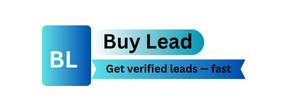In the dynamic world of content writing, understanding the power of backlinks is paramount. They are not merely technical elements; rather, they are fundamental pillars of strong search engine optimization (SEO). Both external and internal backlink strategies play distinct, yet equally critical roles. Mastering these concepts helps ensure your content reaches its intended audience. It also builds significant credibility within your niche. Let us explore their importance and effective implementation.
The Core Value of External Backlink in Content Strategy
An external backlink, sometimes called an inbound link, points from another website to yours. These links act as powerful votes of confidence. When reputable sites link to your content, search engines take notice. This signals that your content is valuable and trustworthy. High-quality external backlinks are a major ranking factor. They significantly boost your domain authority. This ultimately leads to better search visibility.
Securing these links is not about quantity alone. The quality of the linking domain is far more important. A link from a highly authoritative industry website carries immense weight. Conversely, links from low-quality or irrelevant sites can be detrimental. Focusing on relevance and authority is key. It ensures your backlink profile remains strong and healthy. Effective content writing naturally attracts these valuable connections.
Building Authority Through Strategic External Backlink Acquisition
Earning an external backlink requires a strategic approach. High-quality, original content is the first step. Create content that truly solves problems. Provide unique insights or comprehensive guides. This makes your content inherently linkable. People will naturally want to reference it. Outreach is another vital component.
Identify influential sites in your industry. Build genuine relationships with their editors or content creators. Guest posting on relevant blogs can also generate links. Ensure your guest posts offer genuine value. Look for broken links on other sites. Offer your relevant content as a replacement. This is a mutually beneficial strategy. Always prioritize ethical link-building practices. Spammy tactics can harm your site’s SEO in the long run. Focus on creating value first.
Mastering Internal Backlink for Robust Website Structure
An internal backlink connects one page on your website to another page on the same site. While often overlooked, they are incredibly important for SEO. Internal links help search engines discover your content. They guide crawlers through your site structure. This ensures all your valuable pages get indexed. They also help distribute “link equity” or “link juice” across your site. This means authority from stronger pages flows to weaker ones.
Beyond search engines, internal links greatly enhance user experience. They provide clear navigation paths. Users can easily find related content. This keeps them engaged on your site for longer. A well-planned internal linking strategy reinforces topical relevance. It builds a cohesive network of information. This structured approach benefits both users and search engines significantly.
Best Practices for Optimizing Internal Backlink Performance
Effective internal backlink use requires careful thought. Use descriptive and relevant anchor text. Avoid generic phrases like “click here.” Instead, use keywords that accurately describe the linked page’s content. This provides context to both users and search engines. Link important, high-authority pages to newer, less-known content. This helps to boost the visibility of those new pages. It also strengthens your entire site’s authority.
Create content hubs or pillar pages. These comprehensive guides link out to many related articles. Those articles then link back to the pillar page. This forms a strong topical cluster. Avoid excessive internal linking on any single page. Over-optimization can look unnatural. Focus on creating logical and intuitive connections. Regular audits ensure your internal links remain effective.
Combining External and Internal Backlink for SEO Success
Both external and internal backlink strategies are critical. They complement each other perfectly. External links bring authority from outside your site. Internal links distribute that authority effectively within your site. A strong external backlink profile gives your entire domain a boost. Robust internal linking ensures this boost spreads to all your important content. It maximizes the SEO benefit.
Think of it as a two-pronged approach. You attract external validation through valuable content. Then you guide users and search engines internally. This creates a powerful, interconnected web of content. It signals expertise and comprehensiveness. This integrated strategy is the hallmark of successful content writing. It ensures your content achieves its full potential.
Sustaining Content Growth with Integrated Backlink Strategies
Maintaining a strong backlink profile is an ongoing process. It requires continuous effort and adaptation. Regularly create fresh, high-quality content. This provides new opportunities for external links. Also, review and update your existing content. This can help you earn new links. Ensure your internal linking stays relevant over time. As your site grows, new content needs linking. Old links might become outdated. Regular monitoring of your backlink profile is crucial. Track performance metrics. Identify any potential issues quickly.
Focus on user experience in all your linking decisions. Easy navigation keeps visitors engaged. It encourages them to explore more pages. This holistic approach drives sustainable growth. It establishes your content as an authoritative resource. Consistently applying these strategies leads to long-term SEO success. Embrace backlinking as a continuous, vital part of your content strategy.
